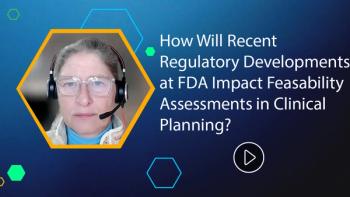
How is the Obesity Medication Marketing Landscape Evolving?
Derrick Gastineau discusses how the focus on weight loss medications has shifted in recent years.
Derrick Gastineau, head of marketing at Currax Pharmaceuticals, spoke with Pharmaceutical Executive about the marketing landscape for weight loss medications and how it’s a therapeutic area where its vastly important to reach patients with the best information possible.
Pharmaceutical Executive: How is the obesity medication marketing landscape evolving?
Derrick Gastineau: Evolving rapidly is the short answer. I came into this space about four years ago and if I’m being honest, I don’t think I knew what a wild ride I was signing up for. In the past two years, we’ve seen such an evolution with the major pharma players joining this space with the GLP-1s and the attention that’s brought to the disease of obesity. It’s just a massively positive thing.
It also comes with challenges. For a smaller company like us, we’re trying to navigate and figure out where we can bring the most value to patients who are out there seeking solutions living with obesity and the HCPs treating the disease. We’re really just trying to make sure that people understand that these drugs have been a massive advancement in our ability to treat this disease, it’s not a one-size-fits-all solution. We want to ensure that HCPs and patients have the education, knowledge, and resources that they need to make the most informed decisions.
PE: What roles do patient-centered strategies play in the obesity medication marketing strategies?
Gastineau: Obesity as a disease state, more so than a lot of other therapeutic areas, really presents that shared decision making opportunity for HCPs and their patients. It’s more of a consumer-driven disease state. That impacts our strategy about where we bring forth information about our product by figuring out how to bring forward the benefits, safety information, and a holistic picture of the drug and what it offers.
Along the way, we’re trying to craft that message to help patients understand the risk-profile of the drug but also allows them to see how it fits into their particular life. We’re meeting them where they are to help them understand the product and how it may fit into their specific situation.
PE: Do patients respond well to story-driven campaigns?
Gastineau: Across the board, humans value authenticity. With our recent campaign, we set out to focus on real patient stories. We found people who had been on the product who were willing and courageous enough to bring forward and share their story. When you do that, with the actual lived experience of the individual who lived that journey, that resonates with people. We’ve tried to be intentional with bringing forward multiple stories because the truth with obesity is that there’s a lot of heterogeneity with the disease, not only from patient to patient but also within a singular patient.
Bringing forward those multiple scenarios and stories helped connect across the spectrum of different patients and the challenges that they are facing.
PE: How can marketing teams combat misinformation in the obesity medication space?
Gastineau: It’s not my job to police the information, I’ll leave that to the regulatory bodies and the elected officials. What we can do is ensure that we’re counterbalancing that with accurate information that is presented in a fair and informed way. This ensures that patients have access to fair and balanced information alongside that misinformation that they’re going to run into that can help them make the best decision.
This includes:
- Meeting patients where they are
- Making sure we understand the avenues that they’re seeking information
- Making sure we have a presence on those platforms
Newsletter
Lead with insight with the Pharmaceutical Executive newsletter, featuring strategic analysis, leadership trends, and market intelligence for biopharma decision-makers.




